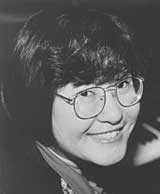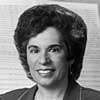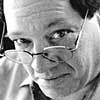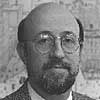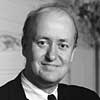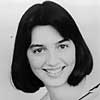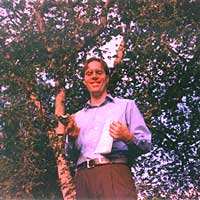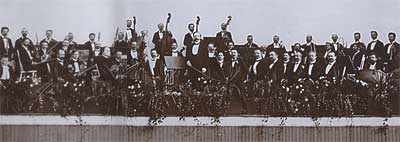 |
 |
 |
 |
 |
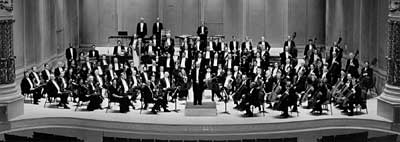 |
Top: Fritz Scheel conducting a concert at Woodside Park (1900)
Middle: Simon Woods, Brian Atwood, Ed Cambron, Joseph H. Kluger
Bottom: Philadelphia Orchestra at the Academy of Music today
Photo credits — Top: Philadelphia Orchestra Archive; Middle: Simon Woods and Joseph H. Kluger — Peter Kind Studios; Bottom: Ed Wheeler |
|
|
Wednesday, August 11, 1999
at the Academy House, Philadelphia PA
Simon Woods – Artistic Administrator, Philadelphia Orchestra
Joseph H. Kluger – President, Philadelphia Orchestra
Edward Cambron – Marketing and Patron Services Director, Philadelphia Orchestra
Brian Atwood – Assistant Director of Communications, Philadelphia Orchestra
Frank J. Oteri – Editor, NewMusicBox @ the American Music Center
Interview transcribed by Jennifer Allen Cooper
1. Why An All-20th Century Season?
FRANK J. OTERI: This all began when my assistant, Nathan Michel, read an article in The New York Times announcing the Philadelphia Orchestra’s idea to do an all-20th-century season He said, “Frank, you’ve got to look at this.” I said, “This is remarkable. I’d love to get everybody involved in this together in a room and talk about how they’re going to make this happen.” We always talk about how we wish orchestras were doing more with 20th-century music and were focusing on 20th-century music, and here we have this whole season which is about that. So that’s the initial inspiration behind our interest in getting together with all of you. The first question I’d like to ask everybody is, how did this all come about?
JOSEPH H. KLUGER: As with a lot of good ideas, they are somewhat inspirational but also a by-product of a lot of input. In this particular case, when we were working with Maestro Sawallisch several years ago to plan this season, we said to him: “Maestro, the orchestra is celebrating its centennial…”
SIMON WOODS: Which, incidentally, coincides with the millennium.
JOSEPH H. KLUGER: We said, “Maestro, this calls for not only the usual special-event concert, but something that is a real artistic statement. Can you come up with an idea that’s important to you that we can use as a red line throughout the season?” So he thought about it and came back to us and, actually, originally proposed, because our centennial really spans two seasons (…the 1999-2000 season is our 100th season, but our actual birthday is on Nov. 16, 2000. . .), he came to us and said, “For two years, I’d like to have on the subscription season programs devoted exclusively to works written in the last 100 years.” It was actually his idea.
FRANK J. OTERI: Wow.
JOSEPH H. KLUGER: And he presented it to us somewhat apologetically, worried that we were going to react with fear and trepidation from a marketing point of view. And I remember finding myself and others who heard the idea initially getting excited by it and saying to him, “Well, maestro, we think probably we’re very excited by this because it’s the kind of thing that we think is going to galvanize us behind something that he believes in, and therefore we can believe in. We did, after looking at some of the repertoire ideas, conclude that we should not merely perform all works but really focusing on the great works of this century. In the face of deciding that we were going to try to perform only the great works of the century, we concluded that it was best to focus this initially on only one season, rather than two. That’s something the marketing people I think were pleased to hear as well.
FRANK J. OTERI: This is so interesting to me, in terms of the marketing behind this, because as a young person I got interested in classical music specifically because of contemporary music. If I lived in Philadelphia, I’d be here every night. You’ve sold a subscription to me! And from a marketing standpoint, I know so many people who I think would be much more interested in classical music if the focus was on the contemporary rather than on the past. So what is the marketing for this?
SIMON WOODS: I’m just a little bit cautious about using the word “contemporary.” Much of this music is not contemporary. You have to be clear when you’re talking about 20th-century music that that’s not what we’re predominantly playing. And, indeed, we have picked up some criticism from the more radical end of people’s taste for not doing enough contemporary music. But if you look at the repertoire, it is predominantly the first half of the 20th-century, so I think we have to get away from using the word “contemporary,” because that’s not really the point of this season. It’s not about living composers. It’s about celebrating two things. It’s about celebrating the 100 years of the Philadelphia Orchestra and the particular associations that this orchestra had with different composers in the past, like Stravinsky and Bartók and Rachmaninoff, and many others, like Shostakovich. And on the other hand, also celebrating what a rich and vibrant history the last 100 years has been.
JOSEPH H. KLUGER: Many of those works, of course, were contemporary when they were performed by us originally and are now part of the standard repertoire, so there is a message we’re trying to deliver with that.
EDWARD CAMBRON: From a marketing perspective, I wouldn’t be telling you the truth if I didn’t say that when I first heard the concept there was a bit of concern on my part. I think that traditional audiences in America are traditionalists. But once Sawallisch and Simon Woods started putting the programs on, it became clear that it was a blend and it was a blend of music that was meaningful to the Philadelphia Orchestra, works that we premiered or composers that we championed that our traditional audience would love to focus on and to celebrate. And at the same time, I remember after the press announcement, I got a lot of calls. I like to think of myself as still young; I’m not sure I am. But I got a lot of calls from some of the music groups in Philadelphia who really were saying for the first time that they were going to subscribe to the Orchestra. So I think the marketing would appear to be a big challenge in the beginning, and it still is, but we have the opportunity to get both sides of the spectrum. I think for the traditionalists there’s a lot in the season that they’re going to love. They’re going to love it because it has a unique relationship to the Orchestra. And I think there are a lot of new works, or works that people are not as familiar with, that are going to bring in that other group. So I’m really looking forward to having a blend in our audience that we may not have had in previous years. And I think that this season allows us to do that.
BRIAN ATWOOD: The nice thing is, too, that that does carry over into the public relations end of things as well. I think that we had a similar reaction to Ed’s when we first heard that the season was going to be music from this past century. But I think that immediately, our tune changed, and we realized that there was such potential for media and press opportunities. And when the season actually was laid out and the pieces that we were going to be performing were put down, we thought it was a real exciting opportunity, and we look forward to it. There are a number of pieces and concerts during the course of the season, and I was going to say “Kudos to you, Simon, for spreading them out very nicely in that during the course of the season there are specific jumps during the season that we can really — from a crude point of view — lay into from a PR point of view.
2. Are There Two Different 20th Centuries?
FRANK J. OTERI: Getting back to this idea of traditional audiences, I think what’s interesting is that there’s a lot of repertoire that we don’t normally associate in our minds as being 20th-century repertoire.
EDWARD CAMBRON: Marketing-wise, one of the biggest challenges is the label “20th century.” And it’s hard, people have ingrained in their soul a definition of what that means.
FRANK J. OTERI: Where does that come from?
EDWARD CAMBRON: I’m not sure. I think it may come from the fact that culturally there is a divide in the century that it’s almost like there are two centuries in one.
JOSEPH H. KLUGER: I think it comes from the experience of listening to music written between 1955 and 1975 or 1985, a lot of which is perceived by audiences to be harsh, dissonant, and something to which they can’t relate.
SIMON WOODS: I also think that if you look at this from a historical perspective, there are two quite different strands going through the century. One strand is the one that runs through Rachmaninoff, Sibelius, Copland, and Samuel Barber. On the other strand, there’s a strand that starts with Schoenberg and runs through Webern and Elliott Carter. One of the big problems is that I do think we have been brain-washed by the intellectual establishment to believe that somehow the Schoenberg-Carter strand is somehow culturally more valued than the other, and I don’t think that I would want to say that either of those strands is more valuable. I don’t think I would particularly like to put a value judgment saying that Rachmaninoff is a composer of greater or lesser importance than Elliott Carter. I think it’s important that both of those strands are given the weight that they deserve. In the past, that hasn’t been the case.
FRANK J. OTERI: It’s interesting to me, talking about the strands perhaps having equal weight rather than one ruling over the other, but in the season, if I may make one comment about the season, there is no Elliott Carter.
SIMON WOODS: There are two reasons for that. One is that we’re trying to play music that’s associated with our orchestra. So you will see works by Stravinsky and Shostakovich and other composers, Samuel Barber, and more recent works which have a particular association with our orchestra. We have not put in there works which we haven’t already played. This orchestra has hardly played any Elliott Carter. We don’t have a relationship with Elliott Carter. He’s not somebody who figures in a season that aims to make a meaningful retrospective of our music.
JOSEPH H. KLUGER: It’s not designed to be a retrospective of the 20th century.
SIMON WOODS: The biggest omission that you’ll find in the season, which actually I’m a little upset about, but it just didn’t work out that way, is that there is actually not one note of Messiaen, who is one of the giants of the century. If you look at it as an overview of 20th-century music, that’s kind of the wrong way to look at it.
3. Commissioning And Recording
FRANK J. OTERI: To get back to music that the Philadelphia Orchestra promulgated through the century, I was thinking, Of course, you can’t possibly include everything, but there is definitely an emphasis on European composers, and I’m thinking, William Schuman wrote symphonies that were premiered by the Philadelphia Orchestra, and in fact the first recording of Charles Ives’s First Symphony was by the Philadelphia, but those works were somehow not included. But I guess you can’t include everything.
SIMON WOODS: This orchestra definitely, over the years, has had more of an association with European composers. That’s a fair comment. This orchestra has never played very much American music. And even just last year, when we played a concert of Bernstein, it’s interesting what a somewhat lukewarm response it had from our audience, which is surprising because that’s of course not what you’d expect at all if you were playing it in New York. This orchestra does not have a particular close association with American composers with the absolute huge exception of Samuel Barber, of course.
FRANK J. OTERI: Interesting.
BRIAN ATWOOD: Despite that though, we can’t forget that the Philadelphia Orchestra does have a long-standing commitment to new music. In fact, that’s evident in our commissioning project for this 100th anniversary season. Simon, you might want to speak that.
SIMON WOODS: I think if you look at the history of the orchestra, look at the great works, which have commissioned or premiered over the years, it’s just an absolutely extraordinary list. We are absolutely aiming to keep that tradition going, and as part of our centennial celebration we’ve commissioned a bunch of composers, an extremely good and varied list of composers who we think represent a kind of … how can I put this? They will help to bring out what this orchestra does best. And I think to some extent that brings us back to the question about Elliott Carter. This orchestra doesn’t have a tradition of playing modernist music. It has a tradition of playing more conservative kind of contemporary music. We didn’t say that the composers we commissioned are conservative, but if you look at people like Richard Danielpour and Aaron Jay Kernis or Rautavaara and some of the other people we’re commissioning, they’re certainly their music has a quality of sonorous quality which is closely matched to the identity of this orchestra, so it continues the line in that sense.
EDWARD CAMBRON: A large percentage of those are American composers, right?
SIMON WOODS: Yes.
FRANK J. OTERI: I know that this season you’re doing two of the commissions, you’re doing the work by Hannibal and then you’re doing the Eighth Symphony of Rautavaara. I should point out that even though Rautavaara is from Finland (in fact I had a wonderful meeting with him in Helsinki last October during the festivities around his 70th birthday), he studied with Aaron Copland. He studied with Roger Sessions, and with Vincent Persichetti. So there are definite American ties in his music.
SIMON WOODS: Although recently, of course, his music has not been known in this country at all. It’s only in very recent years. He did a commission, I think, in Minnesota. [Plymouth Music Series] In recent years, he’s beginning to get a name in this country.
FRANK J. OTERI: The last symphony he wrote was written for the Bloomington School of Music in Indiana.
SIMON WOODS: It’s worth saying that for that piece we’re also going to do something else that’s characteristic of this orchestra: we’re going to play in our tour of Europe in 2000. Next May, we will play both the European premiere of the Rautavaara symphony in Cologne and then we will play the Finnish premiere in Helsinki, which is consistent with this orchestra’s commitment to spreading the word about music it has commissioned.
FRANK J. OTERI: Do you plan to record the works that you’re commissioning?
JOSEPH H. KLUGER: We did receive a proposal from Ondine Records to do just that, but unfortunately the economics of that could not be worked out in time to make that possible.
FRANK J. OTERI: This is actually a very big issue with orchestras around the country, and this strikes me very personally. I’m a record collector and got interested in this music by collecting records, largely buying records of the Philadelphia Orchestra, with Eugene Ormandy and with Leopold Stokowski, buying LPs of core repertoire and in fact the very first LP I bought was Ormandy’s recording of the Bartók Third Piano Concerto, which I see you’re doing this season. It’s one of my favorite records to this day. So it occurred to me that this great orchestra is not getting the word out to the rest of the world on recordings.
JOSEPH H. KLUGER: We share your frustration, which is why we are working creatively to try to find a new method of working with our musicians to make that possible. But we’ve got to approach the recording process differently from the way it’s been done.
FRANK J. OTERI: I know that several orchestras, like the New York Philharmonic and the Chicago Symphony and I believe several smaller orchestras around the country, have initiated their own recording companies and are releasing works themselves.
JOSEPH H. KLUGER: I think you’ll find that the orchestras you mentioned are not actually forming their own record companies, they are reissuing historical broadcasts on CD. In fact, we’re doing a similar thing with a 12-CD set that’s going to come out this fall. But what we’re doing, and I think the St. Louis Symphony is the other orchestra that I’m aware that’s doing it, is we’ve formed a record company to make new records for our own account, if you will. We’ve recently issued the first of those, coming out on a boutique label called Water Lily Acoustics. And that’s the first of what we hope will be several that come out where we take the risk on our own to manufacture and distribute the recording.
FRANK J. OTERI: I have the Water Lily Acoustics recording, and it is a remarkable achievement in terms of the fidelity of the orchestra. There was a lot of work done to make this a real audiophile product.
JOSEPH H. KLUGER: It is designed to be a very true sound, using, I guess, two microphones and an analog tube system for recording on tape, which is then transferred to various digital formats.
FRANK J. OTERI: I guess the one thing that concerned me about the disc, even though it sounded fantastic, is I was wondering what the market was for such a recording beyond the audiophile market, since it was a collection of various of short pieces of repertoire from different composers, there was no overall theme to the disc.
SIMON WOODS: I think it’s worth saying that the three Dvorák overtures—In Nature’s Realm, Carnival, and Othello—were written as a set and were originally published as a set called Nature, Life and Love, and, interestingly enough, although particularly Carnival and to some extent In Nature’s Realm get recorded and played, there are many, many different recordings, there is no currently available recording, I don’t think, of the complete cycle together.

 [60 seconds] [60 seconds]
RealAudio sound clip
from ANTONIN DVORÁK – In Nature’s Realm featured on the CD Nature’s Realm, The Philadelphia Orchestra conducted by Wolfgang Sawallisch {Water Lily Acoustics WLA-WS-66-CD}.
The three Dvorák overtures featured on this CD were given their world premiere performances at a farewell concert in Prague in 1892 shortly before Dvorák’s departure to America and were performed on the Carnegie Hall concert welcoming him to New York. |
Order from Amazon.com
JOSEPH H. KLUGER: The theme is actually focused not so much on the repertoire itself, but more on the concept of creating a product that has sonic excellence that matches the sonic excellence of this orchestra, which we think — we hope — creates a unique identity in the marketplace. The other question is how do you differentiate a recording today from what’s out there? And it is really difficult to make the case, no matter how good the interpretation, that the world needs another Beethoven cycle. And so what we’re trying to do is come up with a niche that we think will appeal not only to audiophiles but to others who are looking for things that sound good today. So this is a repertoire that highlights the sonic excellence of the Philadelphia Orchestra in this new retro recording format.
BRIAN ATWOOD: And in addition to that, one interesting point about the new disc is in the fact that it’s our first recording on this new label, it also makes a statement, when you look at the actual pieces, in that all of the Dvorák pieces are overtures and the Liszt work is Les Préludes. It’s sort of a new beginning both on the recording end of things and also in the pieces themselves. I think that’s a nice thing.
FRANK J. OTERI: That sounds like the headline of a press release! What I found so interesting about the recording is that it was recorded on this label Water Lily Acoustics, which isn’t normally associated with classical music, but is associated with wonderful recordings of non-Western musics, of cross-cultural improvisatory music, of jazz, sort of very progressive things in music. I think it’s very important that the orchestral community reclaim the notion of being progressive and reclaim the notion that this is music that is part of an ongoing tradition. It makes me hope that these commissioned works could be recorded on a label like this to send a message that will get this music out to a new audience.
JOSEPH H. KLUGER: We agree with you. We’re hoping that this first recording is successful so that we can find a financial model for doing many more like that.
FRANK J. OTERI: Let’s talk about the other new works. I noticed that you’ve commissioned Michael Daugherty, who wrote the wonderful Metropolis Symphony a few years back.
SIMON WOODS: There’s also James MacMillan, Richard Danielpour, Roberto Sierra, Jennifer Higdon and Aaron Kernis.
4. Programming American Music
FRANK J. OTERI: The majority of the eight composers you’ve commissioned are Americans.
SIMON WOODS: Plus one Brit, one Finn, and one Puerto Rican…
FRANK J. OTERI: Well, since Puerto Rico is a U.S. Commonwealth and Roberto is based in the United States, I think it’s fair to say he’s also an American composer. Which gets me to my next point, which is it’s interesting that you say the Philadelphia Orchestra has not been traditionally associated with “American composers.” I think one of the interesting things about this season and about highlighting works which the Philadelphia Orchestra in fact gave the world premiere performances of, is that a number of composers we perceive of as Europeans were in fact naturalized Americans and therefore were in fact American composers. I’m thinking now of composers like Bartók and Rachmaninoff, who spent the majority of his life in the United States, of Schoenberg and Stravinsky, who became naturalized U.S. citizens. Kurt Weill, as well, whom I see you’re also doing on this season. These composers became American composers, and a lot of the music they wrote in this country, I’m thinking now specifically of Bartók’s Third Piano Concerto and his Concerto for Orchestra, are very American works in a lot of ways.
SIMON WOODS: What do you think is American about the Bartók Third Concerto?
FRANK J. OTERI: There is definitely a jazz influence, there’s a lot of syncopation going on.

 [30 seconds] [30 seconds]
RealAudio sound clip
from BARTÓK – PIANO CONCERTO No. 3, Third Movement – Allegro Vivace
Gyorgy Sandor – piano, Philadelphia Orchestra conducted by Eugene Ormandy
World Premiere Recording {Columbia Masterworks LP ML 4239}, Out Of Print |
JOSEPH H. KLUGER: You may think this is a heretical statement. The world becomes smaller through technology and our ability to travel. I think, with all due respect to the American Music Center, I think we’ve got to start to recognize that we live on one world, and music is music, and the Philadelphia Orchestra is an international orchestra. The conductors are from all over the world, some of them are American, some of them are European, some of them are Asian, as are the musicians. We just have to make sure we’re presenting the best there is in the world, recognizing that that comes from many different places, and stop apologizing because we either do too much or too little of any one nationality.
FRANK J. OTERI: I’d like to challenge that for a second. When I traveled around in Europe, I discovered that Sibelius is on the money in Finland. And almost all the programs in Finland include works by Sibelius. You go to Germany, and Clara Schumann is on the money. Not just a composer, but a woman composer!
JOSEPH H. KLUGER: I would be equally critical of them in saying that their audiences are missing out on some of the great music of the world, composers like Stravinsky and Barber and William Schuman. I’m not saying we shouldn’t be performing those works, all I’m saying is the parochial point of view, wherever you are, we should be playing more Sibelius in America and less in Finland. We should be playing more American composers in Europe. It’s just a personal statement.
BRIAN ATWOOD: And we’re very lucky, actually, that this orchestra has made that commitment throughout its entire history. And when you look back and start to program a season such as what we’ve done with the 100th, I think you’ll find that the reason we’ve got such a varied list of composers and a vast variety of different areas where they come from is because that directly reflects the history of this orchestra, and we’ve always had a commitment to that and I think we’re continuing that now in our commission projects. Yes, there are a number of American composers, and I think that’s something that we’ve wanted to work on for a while, but as Simon mentioned we also have a number of folks from other countries and other areas of the world that are also being commissioned for this.
5. How To Introduce Audiences To 20th Century Music
FRANK J. OTERI: I want to respond to a comment that was made at the very beginning of this discussion. The Bernstein program that was done recently, you said that the audience reaction was lukewarm. I’d like to explore that a little bit. How does the audience react, in general, to 20th-century music, and how are we turning that around, now that next year is going to be the 21st century and all of this music is going to be old music?
SIMON WOODS: The audience’s reaction to 20th-century music, especially in our city, is very much related to how it’s presented. If you play a work by John Adams and you give people no way into that work, no way of understanding what it’s about and where it comes from, the reaction will be tepid at best. If John stands up in front of the audience, as he did when he came, and explains what the piece is about, his ideas when he wrote it, and gives them a way into it, at least they are prepared to give him the benefit of the doubt. And in many cases, that has completely transformed people’s experiences of it. Certainly when you’re talking about living composers, one of the greatest tools we have at our disposal is the composer himself, the living person, who can stand on the stage and say, “When I wrote this work, I was thinking of X, Y, Z.” It can be an incredibly powerful experience and one that we’re using more and more. We are developing programs, residencies, ideas around their appearances to generate interest, to generate connections with all levels of the organization. That means with the public, that means with the press, with the board, with the volunteers. Right across the range. I think you can work composers very well into the fabric of musical life in the city to have a very positive impact.
EDWARD CAMBRON: I couldn’t agree with Simon more. I think that the more we give our audiences ways into the music, the more we talk about it through newsletters, and through the public relations we do and other marketing tools, the more they enjoy it. I think the days of just kind of throwing it out there — take it or leave it — are gone. People want connections to things, and when a composer or soloist or conductor stands up in front of the audience and shares a little bit about the music and what they see in it and how they feel about it, the audience really appreciates that. I think they listen in a different way. And I know we’re doing a lot more of this. As a marketing person, I’m always pushing Simon and our artistic team to do it all the time. It’s not always practical, and it doesn’t always make sense, but it’s the kind of thing the audience really loves. The other thing we’re doing that’s really special for this season is we did a CD sampler—a CD that gives us a few minutes of eight or nine pieces of music with Sawallisch We talk a little bit about the music, why we chose it, how Sawallisch feels about it. I think those kinds of tools gives people a little bit of insight are good for audiences and they listen in a good way.
SIMON WOODS: That CD is also designed to help us get over another of the problems, I think, with the perception of 20th-century music, that it actually somehow is difficult and challenging, where in some places it isn’t at all.
EDWARD CAMBRON: The Lowell Liebermann Flute Concerto, in particular, I think.

 [95 seconds] [95 seconds]
RealAudio sound clip
Wolfgang Sawallisch talks about the Lowell Liebermann Flute Concerto followed by an excerpt of James Galway’s recording of it for BMG Classics as featured on the Promotional CD – The Fabulous Philadelphians, courtesy The Philadelphia Orchestra |
SIMON WOODS: And there are also older examples like the Stenhammar Piano Concerto. There are a number of works on this season which are absolutely unfamiliar to people and yet which are clearly going to be successful with the audience.
FRANK J. OTERI: To get back to John Adams, a second, because he would be somebody I would think most people would agree writes pretty accessible music, in general. There’s a statistic that’s been floating around the country for a number of years now that he’s the most widely played living American composer. It’s interesting because there’s no John Adams on the season next year.
SIMON WOODS: We’ve played an awful lot of John Adams this year. We played Short Ride in a Fast Machine, Harmonium, Century Rolls—his new concerto for Emanuel Ax…
JOSEPH H. KLUGER: … and he conducted for a week.
SIMON WOODS: So he’s by no means under-represented with us.
FRANK J. OTERI: It’s good to give other people a chance this coming season. Let’s take it away from American repertoire for a moment. You’re doing the Górecki Third Symphony this season, and it’s a premiere for Philadelphia. You’ve never done the work before. But this is a work that’s been immensely popular and brought a huge new audience to symphonic music. Lots of people bought this who would never buy a recording of a symphony. This was on the best-selling charts on Billboard; it even hit the pop chart in England at some point.
JOSEPH H. KLUGER: We were particularly pleased because after we made a list of works we thought should be on the season, we went to Maestro Sawallisch and asked him which of the works he wanted to conduct, and he chose the Górecki…
SIMON WOODS: …to acknowledge the importance of this work by deciding he wanted to do it himself was very pleasing.
FRANK J. OTERI: It’s interesting because the Philadelphia Orchestra has not had a history with Górecki’s Third. It was not a work that the Philadelphia Orchestra gave the world premiere of or even the American premiere of. So what was the justification for programming it?
SIMON WOODS: If you think about the sound of that piece and you think about the sound of the Philadelphia Orchestra, you’ll have your answer.
FRANK J. OTERI: So it was purely aesthetics. Well, we can definitely appreciate that.
SIMON WOODS: Well, I don’t know that it was purely aesthetics. I think having that piece played by this orchestra is kind of a dream, really.
6. Promotion And Education
FRANK J. OTERI: Let’s talk about education a little bit. I know that you’ve made this promotional CD for the season, and, Ed, this was basically your brainchild, if I’m not mistaken.
EDWARD CAMBRON: Well, no. It was really an idea that came out of a natural excitement about the season. As people began to ask a lot of questions, Simon put together a collection of musical samples to share with the staff of the orchestra so that everyone could hear a few things they may not have been familiar with. And it was amazing the applause that came from the administration of the orchestra and how excited they became. We all saw that, and it was the kind of goose bump we wanted to give our audience. We put together the project through that.
FRANK J. OTERI: What’s the plan for the CD in terms of getting the word out?
EDWARD CAMBRON: The CD sampler is kind of a tool to get people to subscribe. So we’re trying to get it in the hands of people who might have a little hesitation about the season, those people who are stuck in the 20th century label, so we’re doing a lot of prospecting of culturally active Philadelphians, former subscribers, and the like. It’s a sales tool. I don’t really view it as an educational piece, so we’re really not positioning it as something to use as part of our education program. We are doing a lot of other things on the education front.
SIMON WOODS: We have a new director of education and community projects who’s just joined us. He’s an extremely thoughtful and highly articulate person.
EDWARD CAMBRON: In terms of adult education, we’re doing a lot more stage commentary, and we have a growing series of concert conversations that feature different composers and conductors. Paul Horsley, our program annotator and resident musicologist, leads a lot of those. That’s a very popular series of adult or audience education. The other thing we’re doing is we have a great program with Temple Music Prep, here in Philadelphia, where we have a series of onstage lectures, opportunities for audience members to meet musicians, they get to hear a little bit about how critics write reviews, that’s an adult education program that we’re excited about as well. In addition to that, we have a great many events for the children of Philadelphia, a very exciting program that we’re working on with Settlement Music School, taking our musicians into the school system.
JOSEPH H. KLUGER: I just wanted to add that while Gary has come on board and is helping us make a complete reevaluation of all our education programs, we hope to be coming out in the near future with a new plan that really makes educational activities, particular for children, part of the core activity of what we do in the 21st century. We’ve had a long history of doing educational activities, but they, in my opinion, too much focused on ancillary kind of things you need to do because it’s politically correct to do educational activities. We’ve come to the realization that it is not merely important for long term audience development, but it really ought to be part of our mission to be focusing on this as part of the core of what we do.
7. The Future
FRANK J. OTERI: My one last big question has to do with, you do the season, it happens, and now we’re in the 21st century. What happens in the 21st century? What is the long term plan for the Philadelphia Orchestra in terms of integrating more recent music? You have these commissions that are coming up. What can we expect to see two seasons from now? Another season that’s majority Brahms, Mozart, Mendelssohn? How is this new approach to programming going to carry out in the coming years?
JOSEPH H. KLUGER: First of all, we have a commitment to continue to commission new works, which we’re making decisions now for works that are going to be in the pipeline and be produced each year, I think we’re planning now as far out as 2005. In terms of the programing focus, we are committed as an orchestra to presenting the broadest spectrum of symphonic music, and are actively coming up with the particular focus for the 2001-2002 season and beyond. I’ll tease you a little bit by saying the specifics are going to have to wait, other than to say that we are very encouraged by the positive response we’ve gotten from people who have heard about this season’s programming and saying, “Wow, that’s really exciting. We encourage you to have a thematic focus to what you do and to continue to take risks.” That doesn’t mean that in the future we’re going to abandon in the core repertoire. Manny Ax said recently that the core symphonic repertoire is like the Bible, and it continues to be at the core of what we do and continues to benefit from renewed interpretation. But we’re also very committed to making sure that we move our art form forward. At the same time we present the canon of symphonic literature, we’re identifying those works that will be part of the standard repertoire in the future.
SIMON WOODS: It’s worth adding one thing to that, which is that my personal belief that there are many areas of the repertoire, not only in contemporary music, which are worth exploring. We play a relatively small repertoire and we’ll continue to go on playing the key masterpieces, but we’re also playing the Stenhammar Concerto and the season after next I can tell you we’re going to play the Franz Xaver Scharwenka Fourth Piano Concerto, which was the piece that Stephen Hough has been playing and making famous, a fabulous romantic work. There are many backwaters from the 19th and early 20th century, which we can also play. All of this is about making the repertoire a mix of things that are familiar and things that are less familiar, that I think are new and exciting.
FRANK J. OTERI: Despite the press announcements and your own materials and our conversation today about doing an all-20th-century season, even in this season, there are two Beethoven symphonies and a performance of Handel’s Messiah. I guess we can’t escape this music no matter how hard we try.
EDWARD CAMBRON: [laughs]
JOSEPH H. KLUGER: They’re not on subscription, though. They’re only on special event concerts. Every single work in the 96 subscription concerts was written after 1900.
FRANK J. OTERI: That’s great. But yet the very first concert, opening night, is all 19th century repertoire, with the exception of Samuel Barber’s Knoxville 1915.
SIMON WOODS: But that’s not related to our theme. Our theme is related to our subscription concerts. The other special-event concerts throughout the season have been programmed just as normal.
EDWARD CAMBRON: Opening night is a one night fundraiser.
FRANK J. OTERI: I’d like to thank you all for this unique opportunity to talk about this unique orchestral season. Would anybody like to add a final thought?
EDWARD CAMBRON: When any of your surfers are in Philadelphia, I hope they come by and see us at the Academy of Music in Philadelphia.


